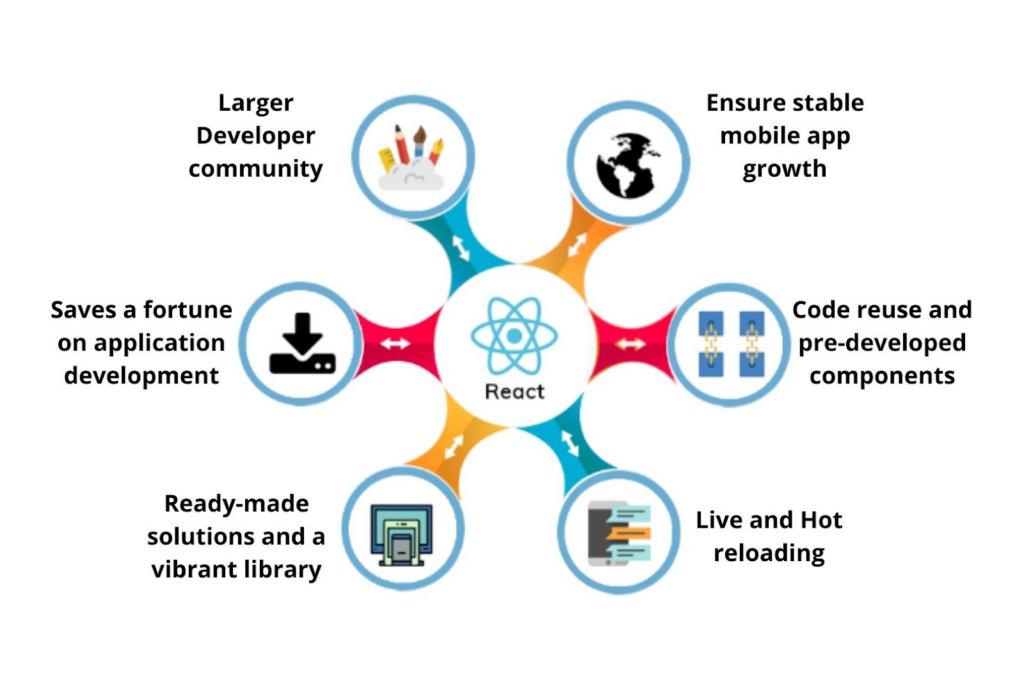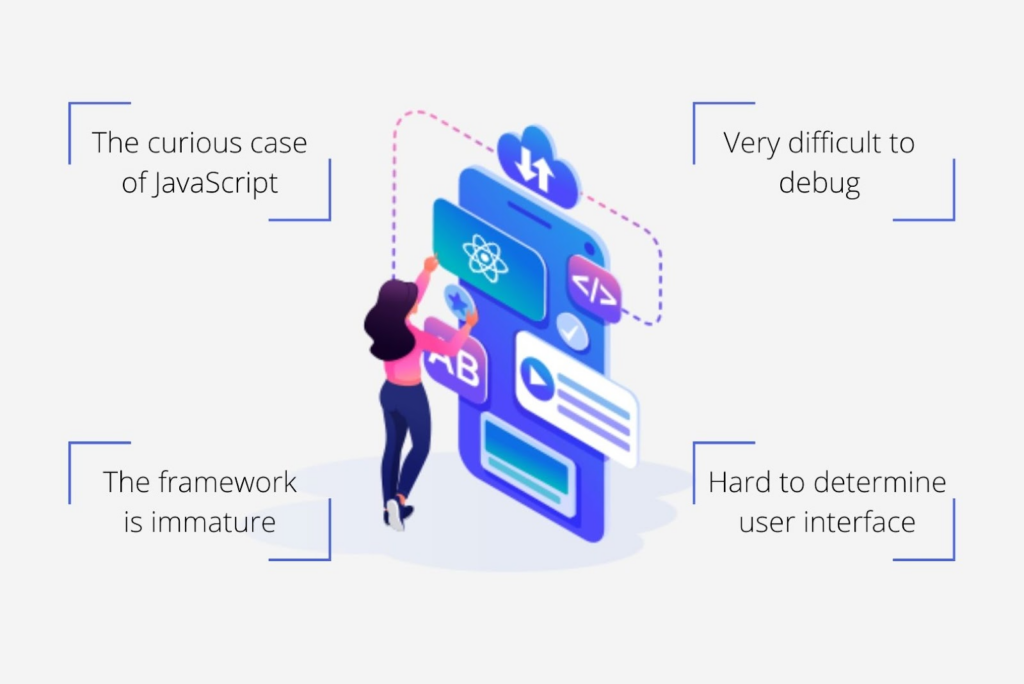
Mobile App Development Using React Native: Pros and Cons
React Native is a revolutionary cross-platform app development framework, comparable to Flutter. React Native is being used more frequently than ever thanks to the growing acceptance of cross-platform programming. Mobile app development with react native is attractive. Because of its reusable components or having a shareable code store. So let’s discuss how to build a React Native app.
It offers excellent and almost unrivaled advantages. These make react Native one of the most popular cross-platform app development frameworks. Now that React Native is available, developers may use it to create path-breaking Android and iOS apps.
However, as anything else in life, there are advantages and disadvantages when using React Native for creating apps. So, are you ready to learn about the benefits and disadvantages of React Native? We’ll talk about React Native’s benefits and disadvantages in this blog.
A Brief Journey of React Native
Actually, React Native got its start in 2013 as a Facebook internal summer hacking project. The first React Native 1 preview released two years later. Following the release in January 2015, Facebook formally introduced React Native during the F8 conference in March 2015.
The goal of React Native was to simplify the app development process more than ever. Because the framework is an open-source platform, React Native app developers have constant access to a large React community.
The social media also currently working on several other React Native enhancement projects, including:
- Native React fabric: This is a newly developed user interface layer for the architecture
- Lean Core: It aids in making the mobile app smaller. It does this by transferring the features (movable) to several libraries.
- TurboModules: Use to improve how the other native modules are handled.
React Native provides a more superior and reliable API compared to its competitors thanks to Facebook’s support. In addition, the framework places a strong emphasis on resolving any underlying problems.
Important Facts About React Native App development
Let’s go through some stunning React Native facts. This is necessary since it will enable you to truly understand the complexity of the framework.
- React Native uses the same basic building components for creating mobile apps. Both Android and iOS apps use the same UI blocks.
- As a result, developers do not need to create blocks in Kotlin, Swift, or Java independently.
- Widgets from React Native are comparable to those from Flutter.
- React Native apps display exactly the same on iOS and Android.
- The iOS and Android apps share 96% of the same code base.
- React Native development takes less time than native development.
- The react native’s primary logic can be shared by mobile apps, web apps, and desktop app.
After the pandemic, there was a revolutionary change in the tech industry. Therefore, it is now much more crucial to fully understand a framework’s advantages and disadvantages before deciding to use it in 2022. The most significant benefits and disadvantages of React Native are listed below.
Advantages of React Native App Development
There are number of benefits of using React Native for mobile app development. It undoubtedly gives developers the flexibility to innovate. First things first, therefore let’s look at all the top benefits to build a react native app.

Ensures stable mobile app growth
Mobile app development is an extremely dynamic and unstable field. Using React Native for mobile app development has several advantages, one of which is that it guarantees steady growth.
The developers are able to concentrate on creating apps rather than worrying about other aspects. Because they are confident in the framework’s functionality. As a result, the app’s functions are more resistant to variations and continue to function as expected. Due to the resistance, hybrid apps offer an equivalent user experience to native apps.
Code reuse and pre-developed component
Another fantastic benefit of creating mobile apps with React Native is code reuse. The benefit of developing code just once and using it numerous times is enjoyed by developers. The ability to reuse code helps developers save time by eliminating the need to write distinct scripts for several platforms.
On both OS platforms, developers of React Native apps reuse roughly 90% of the code. Even more interesting is the fact that code reuse is not limited to mobile apps. They can also used by developers to create websites.
Live and hot reloading
React Native is well-known in the field of creating mobile applications for these features. The characteristics that make React Native unique is live and hot reloading. The Hot Module Replacement feature inspired the Hot Reloading feature (HMR).
Live reloading, on the other hand, is a device used for compiling and reading the file. When the developer makes modifications, this process occurs. It also provides the simulator with a fresh file. The simulator starts reading the app from the beginning through this file.
Disadvantages of React Native App Development

Difficult to debug
React Native mobile app development is quite challenging to debug. Due to the fact that these apps were created using Java, C/C++, JavaScript, etc., debugging becomes an extremely time-consuming procedure. Because of this, developers must have knowledge regarding the platform’s native language.
Hard to determine the user interface
React Native may not be the best option for you if your mobile app needs capabilities like multiple screen transitions, animations, and interactions. React Native is not used to create mobile apps with sophisticated motions.
The framework is immature
The framework undergoes numerous new developments and updates at a quick rate. Every single update or release contains so many important changes that they can end up the creators. Developers do not have enough time to adapt to the changes because they happen so quickly. And even before they do, there will be another one.
The curious case of JavaScript
There is no denying the strength and adaptability of JavaScript as a programming language. It is, however, loosely typed. Engineers may believe that there is no type safety in some situations, which makes growing React Native apps challenging.
As a result, the developers will definitely choose alternative third-party integrations and tools. Such as Flow and TypeScript, which may apply to an existing infrastructure.
Tougher to build a cross-platform team
React Native is fundamentally just a cross-platform app development tool. developers need to have a good knowledge of both native and web technologies. They should fluent in JavaScript, project configuration, CI, UX standards, etc.
It is challenging to find developers with in-depth knowledge of both today, so it’s crucial that you pick an experienced app development company.
Read More : TOP 7 INDUSTRIAL BENEFITS OF MOBILE APP DEVELOPMENT